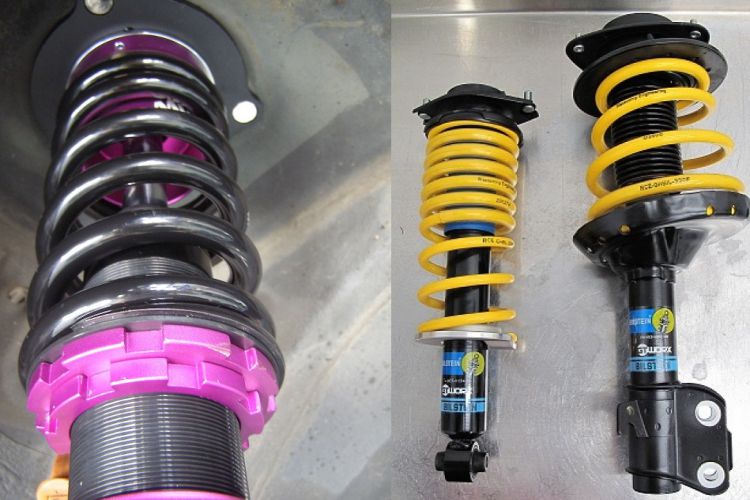 When it comes to tuning vehicles for enhanced performance and aesthetics, two commonly modified components are the suspension springs and dampers. Both lowering springs and sports dampers are crucial to a car’s handling characteristics, but they serve different purposes and impact the ride in unique ways. This guide will help you understand the differences between lowering springs and sports dampers, so you can make an informed decision if you’re considering upgrading your vehicle.
When it comes to tuning vehicles for enhanced performance and aesthetics, two commonly modified components are the suspension springs and dampers. Both lowering springs and sports dampers are crucial to a car’s handling characteristics, but they serve different purposes and impact the ride in unique ways. This guide will help you understand the differences between lowering springs and sports dampers, so you can make an informed decision if you’re considering upgrading your vehicle.
Lowering Springs
Lowering springs are designed to decrease the ride height of a vehicle, which often results in a lower centre of gravity. This modification can lead to improved handling due to reduced body roll during cornering, as well as a more aggressive stance visually.
Key Features:
- Reduced Ride Height: This typically reduces vehicle height by 1 to 2 inches.
- Stiffer Spring Rate: Generally stiffer than stock springs, providing less body roll.
- Improved Aesthetics: Offers a more appealing look with the reduced wheel well gap.
- Affordability: Usually more cost-effective as a stand-alone modification.
Benefits:
- Enhanced handling is due to the lower centre of gravity.
- Potentially improved aerodynamics.
- A sportier look that appeals to many car enthusiasts.
Drawbacks:
- Stiff ride quality, which might not be comfortable for all drivers.
- Potential for increased wear on stock dampers if not paired with sport dampers.
Sports Dampers
Sports dampers, also referred to as performance shocks or sport shock absorbers, are designed to control the rate at which springs compress and rebound. They are crucial in managing how a car responds to road irregularities, ensuring grip and stability. BMW 335xi lowering springs reduce the vehicle’s centre of gravity and reduce body roll for better handling. The progressive spring rate design provides superb ride quality.
Key Features:
- Enhanced Damping: Increased damping forces for better ride control.
- Adjustability: Some models offer adjustable settings to fine-tune the ride and handling.
- Improved Durability: Often constructed to higher standards for longevity under performance conditions.
- Compatibility: Can be paired with stock springs or aftermarket lowering springs.
Benefits:
- Better control over body motion, improving handling and responsiveness.
- Smoother ride with better shock absorption capabilities on uneven roads.
- Customization with adjustable options to cater to different driving conditions and preferences.
Drawbacks:
- Can be more expensive than replacing springs alone.
- Without proper tuning, it may lead to a harsher ride quality.
Conclusion
Choosing between lowering springs and sports dampers—or combining them—depends on what you’re looking to achieve with your car. If you’re primarily looking for a lowered appearance and a modest handling improvement, lowering springs might be the way to go. However, for a more pronounced impact on handling and ride quality—especially if you’re tackling different kinds of driving environments—upgrading to sports dampers or using them in conjunction with lowering springs could be the better route.
Remember that altering the suspension system impacts other vehicle systems, so it’s essential to consider alignment, tyre wear, and the car’s overall balance when making changes. Always consult with a suspension specialist or perform thorough research before making modifications to ensure you’re achieving the desired performance and maintaining safety standards.




